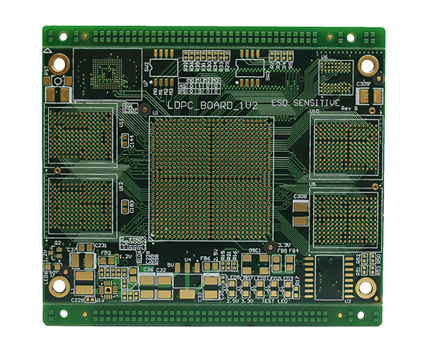PRODUCTS
Mastering High Frequency Board Layout

Mastering the intricacies of high-frequency board layout is crucial for the successful operation of modern electronic devices. From 5G communication systems to high-speed data centers, the performance of these systems hinges on the meticulous design and implementation of their printed circuit boards (PCBs). The book "Mastering High Frequency Board Layout" serves as a comprehensive guide navigating this complex field, offering valuable insights and practical techniques for engineers and designers striving for optimal signal integrity. This article will delve into several key aspects covered within the book, highlighting its importance in the realm of high-speed design.
Understanding Signal Integrity Challenges at High Frequencies
High-frequency signals, unlike their lower-frequency counterparts, are significantly more susceptible to various parasitic effects. These effects, often overlooked in lower-speed designs, can lead to signal degradation, noise, and ultimately, system malfunction. The book meticulously explains how factors such as trace impedance, dielectric losses, and electromagnetic interference (EMI) become increasingly critical as frequencies rise. It emphasizes the importance of understanding these phenomena and their impact on the overall signal integrity.
One crucial aspect discussed is the concept of transmission line effects. At higher frequencies, traces on the PCB no longer behave as simple conductors but rather as transmission lines, exhibiting characteristic impedance and propagation delays. Ignoring these effects can lead to signal reflections, ringing, and crosstalk, rendering the system unstable or non-functional. "Mastering High Frequency Board Layout" provides detailed explanations and practical guidelines for designing traces with controlled impedance, minimizing reflections, and ensuring proper signal propagation.
Controlling Impedance and Minimizing Reflections
Controlling the characteristic impedance of signal traces is paramount in high-frequency design. The book devotes considerable space to explaining various impedance control techniques, such as using controlled trace width and spacing, selecting appropriate dielectric materials, and employing specialized structures like microstrip and stripline. Achieving and maintaining a consistent impedance along the entire signal path is essential to minimize signal reflections and ensure signal integrity.
The book also addresses the importance of proper termination techniques. Terminating the transmission lines at their source and destination with appropriate impedance matching resistors is critical to absorb reflected signals and prevent signal distortion. Different termination schemes, such as source termination, load termination, and series termination, are carefully explained, along with their respective advantages and disadvantages, allowing designers to select the most suitable method for their specific application.
Managing Crosstalk and EMI
Crosstalk, the unwanted coupling of signals between adjacent traces, poses a significant challenge in high-density PCB designs. "Mastering High Frequency Board Layout" provides detailed strategies for minimizing crosstalk, including proper trace routing, using ground planes effectively, and implementing shielding techniques. It emphasizes the importance of understanding the coupling mechanisms and employing appropriate design rules to mitigate their effects.
Electromagnetic interference (EMI) is another critical concern in high-frequency circuits. The book offers practical advice on designing PCBs that minimize EMI emission and susceptibility. This includes proper grounding techniques, using shielding enclosures, and implementing filtering components to suppress unwanted radiated emissions. Understanding EMI regulations and compliance requirements is also highlighted.
Advanced Layout Techniques and Considerations
Beyond the fundamental principles, the book delves into more advanced layout techniques, including the use of controlled impedance structures, differential signaling, and embedded passive components. These techniques offer greater control over signal integrity and allow for higher-speed data transmission. The book provides detailed guidance on implementing these techniques effectively and avoiding potential pitfalls.
Finally, the book emphasizes the importance of simulation and analysis tools in high-frequency PCB design. It highlights the role of electromagnetic field solvers and signal integrity simulation software in verifying designs and predicting their performance before fabrication. By using these tools, designers can identify and address potential issues early in the design process, saving time and resources.
In conclusion, "Mastering High Frequency Board Layout" provides an invaluable resource for anyone involved in the design and implementation of high-speed electronic circuits. By thoroughly covering the fundamental principles and advanced techniques, it equips engineers and designers with the knowledge and tools necessary to create robust and reliable high-frequency PCBs that meet the demanding requirements of modern electronics.
SUBSCRIBE
INQUIRY

